Living with Eastern Coyotes
- Meet the Eastern Coyote
- Coyote family dynamics
- Coyote’s role in the ecosystem
- Coyotes in residential neighbourhoods
- Intentional and unintentional feeding of coyotes
- Coyotes and news media
- Making backyards less attractive to coyotes
- Aversive conditioning to deter coyotes
- When to use aversive conditioning
- Coyote in a schoolyard or playground
- A coyote is “stalking” me!
- A coyote has denned on my property
- Can I trap, relocate, or kill nuisance coyotes?
- Coyote and Dog Relations
- Conflict between Dogs and Coyotes
- Preventing conflict between dogs and coyotes
- Coyotes and dogs in yards
- Coyotes and Cats
- Is a coyote actually a “coywolf”?
- What to do if you see a sick or injured coyote
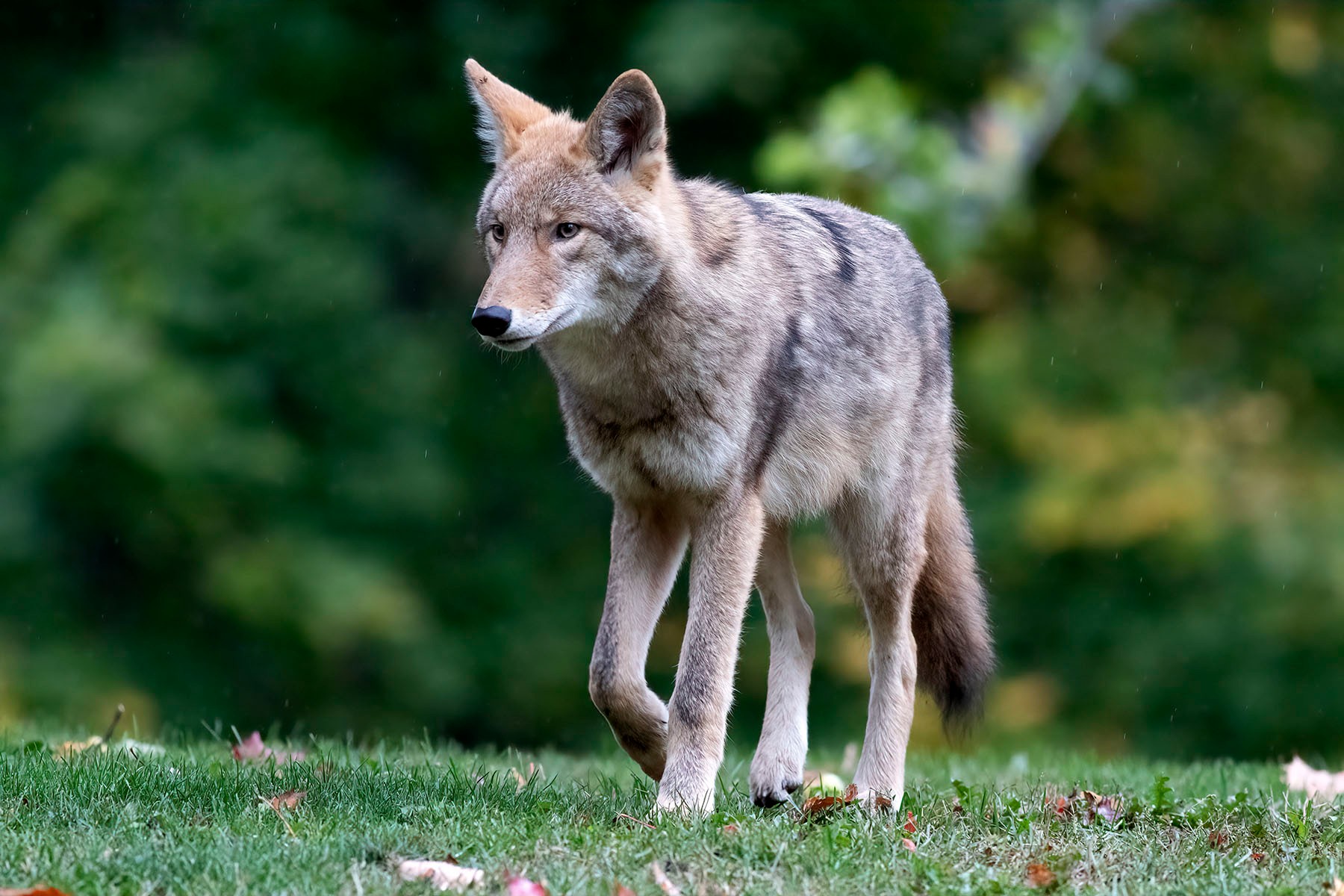
Photo by Ann Brokelman
The Eastern coyote, scientifically known as Canis latrans, is a versatile and adaptable species of canid found in a variety of habitats across North America, including urban and suburban areas. Typically weighing between 30 to 40 pounds, Eastern coyotes have a varied coat coloration ranging from gray to reddish-brown. They are often perceived to be larger in size than they actually are, especially during winter months, due to their thick, fluffy, winter coat.
Coyote family dynamics are fascinating!
Coyote families are hierarchical and collaborative; their complex and cooperative behaviours are essential to their social structure and survival strategies. They typically form family units known as ‘groups’ which consist of a mated pair, their offspring from the previous year, and occasionally, young pups born in the current breeding season. The mated pair assume leadership roles within the group, working together to raise and protect their offspring. Coyotes are monogamous and tend to mate for life, fostering a stable family unit.
Fun Fact!
Offspring from the previous year often remain with the family, helping to teach, care for and protect the new litter of pups, contributing to the survival and success of the group!

Each spring, coyote families establish and tend to their dens which are essential to raising and protecting pups from potential threats. Pup rearing season lasts from late March to September, with coyotes having 4-7 pups on average. Coyote dens are typically located in secluded areas such as thickets, brush-covered slopes, or under rocky overhangs, providing a secure environment for the vulnerable pups. Even in the absence of moderately wooded and forested locations like large parks, ravines, or golf courses, coyotes demonstrate incredible adaptability. One key factor motivating this adaptability is the abundance of human food sources commonly found in urban areas.
To safeguard their movements and habits from both predators and prey, the coyote may strategically choose to den in multiple locations, often incorporating multiple entrances for a single den. Maintaining secrecy is paramount. In the event of any disturbance or detection of a den, the family may abandon it to establish a new, more secure den if they have the option to.
Understanding the intricate family dynamics of Eastern coyotes sheds light on their adaptability and resilience. These cooperative social structures contribute not only to the success of individual groups but also to the broader ecological roles that coyotes play in maintaining balanced ecosystems.
Did you know?
Communication is a cornerstone of coyote family dynamics! Yips, barks, and howls are used for various purposes, including coordinating activities, alerting the group to potential threats, and maintaining social bonds.
Coyote’s role in the ecosystem
 Coyotes play a multifaceted and beneficial ecological role, even in suburban and urban settings! As opportunistic predators, coyotes are regulators of local wildlife populations and keep numbers of smaller mammals in balance, such as rodents and rabbits. The management of these populations indirectly aids in maintaining plant diversity, as an overabundance of herbivores could lead to vegetation damage and negatively impact local ecosystems. In fact, coyotes can be considered as a sustainable and environmentally friendly approach to managing urban ecosystems!
Coyotes play a multifaceted and beneficial ecological role, even in suburban and urban settings! As opportunistic predators, coyotes are regulators of local wildlife populations and keep numbers of smaller mammals in balance, such as rodents and rabbits. The management of these populations indirectly aids in maintaining plant diversity, as an overabundance of herbivores could lead to vegetation damage and negatively impact local ecosystems. In fact, coyotes can be considered as a sustainable and environmentally friendly approach to managing urban ecosystems!
Thank a coyote!
They are effective scavengers; through consuming carrion and other organic waste, they contribute to the cleanup of urban spaces, reducing the risk of disease transmission and promoting overall cleanliness!
The presence of an apex predator is an indicator of a healthy and balanced ecosystem. As cities continue to expand and intertwine with natural habitats, understanding and appreciating the ecological role of wild canids becomes essential for fostering coexistence between wildlife and human communities.
Coyotes in residential neighbourhoods
Coyotes are common residents in most cities across North America. Urban coyotes typically favour forested areas such as parks and ravines, yet sightings in residential streets or backyards are not uncommon and should not cause alarm.
Coyotes inherently fear humans, viewing us as potential predators. Generally crepuscular (mostly active during dawn and dusk), urban coyotes often adjust their circadian rhythms to venture out during the night, minimizing encounters with humans. However, observing a coyote during daylight hours is definitely not unusual, as various factors may prompt their daytime presence.
Coyotes, like all wildlife, must meet the basic needs for survival, which include food, shelter, and successful reproduction. Beyond their main diet of small prey such as mice, rats, squirrels, and rabbits, cities provide ample opportunity to scavenge for fallen fruits, vegetation, insects, and occasionally human-discarded food or garbage. While coyotes typically maintain a baseline fear of humans, events in their lives can erode this fear, making them less cautious around people and their homes.
Residential areas are attractive to coyotes due to their tranquility, abundant bird feeders which attract small rodents (a staple of the coyote diet), improperly contained garbage or compost, and numerous hiding spots in dense garden bushes or behind sheds.
 Similar to their domestic dog cousins, coyotes are highly intelligent and learn behavior through accumulated experiences. What may seem like a “neutral” encounter for us, such as quietly observing a coyote crossing our path, can be interpreted as a “positive” one from the coyote’s perspective. Although the coyote may appear uninterested and passive, they learn that being in the presence of a human has no negative consequences. Over time, with repeated similar interactions, a coyote may become more comfortable allowing themself to be seen by people, potentially leading to conflicts down the road. It’s crucial to foster a mutual understanding of boundaries to ensure the safety of both coyotes and humans.
Similar to their domestic dog cousins, coyotes are highly intelligent and learn behavior through accumulated experiences. What may seem like a “neutral” encounter for us, such as quietly observing a coyote crossing our path, can be interpreted as a “positive” one from the coyote’s perspective. Although the coyote may appear uninterested and passive, they learn that being in the presence of a human has no negative consequences. Over time, with repeated similar interactions, a coyote may become more comfortable allowing themself to be seen by people, potentially leading to conflicts down the road. It’s crucial to foster a mutual understanding of boundaries to ensure the safety of both coyotes and humans.
Intentional and unintentional feeding of coyotes
Feeding coyotes, whether directly or indirectly, has significant negative consequences on their behaviour and can alter their perception of humans. The distinction between individuals who feed them and those who do not is lost on them. Receiving handouts becomes an easier option than hunting for natural prey, leading them to approach humans for food if the situation seems familiar. Coyotes that have been fed and associate humans as a potential food source may display demanding behavior, such as nipping or grabbing at clothing. This learned behavior poses risks for both coyotes and humans, as it diminishes the natural wariness that coyotes should maintain toward humans, increasing the likelihood of negative interactions. To ensure the safety of both species, it’s essential to avoid feeding coyotes.
Coyotes avoid approaching people unless it has been taught to do so through direct feeding. It is crucial to emphasize the importance of never feeding a coyote, as this behavior is directly linked to undesirable interactions, including very rare but unfortunate coyote nips and scratches to humans.
Accidental feeding can attract coyotes to a neighborhood. Factors such as improperly contained garbage, litter in public areas like parks or schoolyards, leaving pet food outside, fruit trees, or providing bird seed can cause coyotes to scavenge, or the food attracts the coyote’s preferred food sources (such as squirrels, chipmunks, voles, mice, and rats). To ensure the safety of both humans and coyotes, it’s essential to avoid directly or indirectly feeding wildlife and to promote coexistence through responsible practices.
Coyotes and news media
Sensationalism in the media often creates an exaggerated perception of the frequency of coyote bites to humans, fostering unnecessary fear. Despite hundreds of coyotes residing in the Greater Toronto Area (GTA), actual coyote bites to people are exceptionally rare. For instance, the chances of being struck by lightning in Canada are estimated at around 180 incidents per year, and car-related injuries reach approximately 150,000 annually. In contrast, a study by The University of Calgary revealed that, on average, fewer than three people (2.4 individuals) per year experience scratches or bites from coyotes in Canada. It’s essential to highlight that coyote bites to humans are always associated with coyotes that have lost their fear of humans, often due to feeding or a lack of aversive conditioning tactics.
Domestic dogs, in contrast to coyotes, pose a higher risk of biting people, accounting for an estimated over 300,000 dog bites per year in Canada, with three-quarters of the victims being children under the age of 10.
The media often employs inflammatory terminology when reporting on conflicts between coyotes and humans or pets, frequently using words like “attack” even when there has been no physical contact between a coyote and a person or pet. Other inflammatory terms commonly used include “stalking,” “taking over,” “aggressive,” “lurking,” “charging,” “prowling,” and “luring.” Furthermore, some news outlets use language typically reserved for describing criminal behavior in humans to portray coyotes, such as referring to them as “at large” or “on the loose,” “engaging in violence,” “stalking playgrounds,” or “fleeing the scene.” This sensationalized language not only perpetuates unnecessary fear but also fosters an unfair stigma against coyotes. Instead of prioritizing hyperbole over reality, it is appreciated when reputable news organizations consult with wildlife experts and authorities, such as TWC, to understand the circumstances of a conflict and report accurately and responsibly.
Making backyards less attractive to coyotes
To minimize the presence of coyotes passing through your yard, you can take the following preventive measures.
Remove all food attractants:
- Secure garbage/compost bins.
- Clear up fallen tree fruits/berries/nuts.
- Keep pet food and water bowls inside.
- Remove food left out for wildlife, including birdfeeders.
MYTH!
Placing food out for coyotes away from your house will ensure they stay elsewhere.
FACT!
You are only creating a problem in another neighbourhood and there’s no proof that this keeps them away – they may pass through your yard for a variety of reasons.
Increasing your presence in your yard:
- Coyotes typically prefer areas with minimal human activity, so merely increasing your use of and enjoyment in your backyard—whether it’s gardening, lawn work, exercising, playing music, or having people over—will convey the message that the yard is occupied and not an ideal spot for coyotes to visit.
Enhance fencing:
- Coyotes are excellent climbers and can scale most fences (or go under them). To completely prevent coyotes from entering your backyard, installation of a tall wooden fence is required, with the bottom of the fence extending at least 6 inches below the ground, and use either Coyote Rollers or install wire mesh to outwardly invert the top of the fence to prevent them from entering.
Alter the environment to deter coyotes:
- If you observe a coyote frequently passing through your yard, introduce novel items like a lawn chair or table along their path. Coyotes are cautious about changes in their environment, and this can prompt them to avoid your yard.
- Consider installing motion-sensor lights and sprinklers in your yard. The sudden activation of these devices can startle coyotes, discouraging them from lingering in your space.
- Repair broken floorboards on porches and close up openings that lead under the house, sheds, porches or decks.
A more practical and less expensive option to deter coyotes from your yard is a tactic called aversive conditioning. This involves specific actions to make the coyotes uncomfortable, discouraging their presence.
Aversive conditioning to deter coyotes
Also known as counter conditioning, aversive conditioning proves to be the most effective way to communicate to a coyote that their presence in a particular area is unwelcome – essentially, it is a method of scaring them away. As mentioned earlier, coyotes may begin to ignore their instinctual fear of humans through learned behavior. Employing aversive conditioning is a proven strategy to reverse this undesirable behavior and establish boundaries.
In most cases, shooing away a coyote does not require excessive effort.
Here’s a simple guide:
Step 1: Stand your ground facing the coyote OR slowly but confidently walk towards them and make direct eye contact.
Step 2: Add ACTION: Wave your arms in the air, make yourself appear large and threatening. Repeatedly popping open an umbrella, or waving around and snapping a large garbage bag creates unusual visual and sound to the coyote. If it’s dark, use a flashlight to shine it at the coyote.
Step 3: Add NOISE: Clap your hands, yell (don’t scream), slap a newspaper on your thigh, stomp your feet loudly, shake your car keys, bang pots together, or use a noisemaker like nuts and bolts in a pop can.
Step 4: Slowly make steps toward the coyote until they are completely off your property or out of sight. The message needs to be clear and memorable: you are not welcome here.
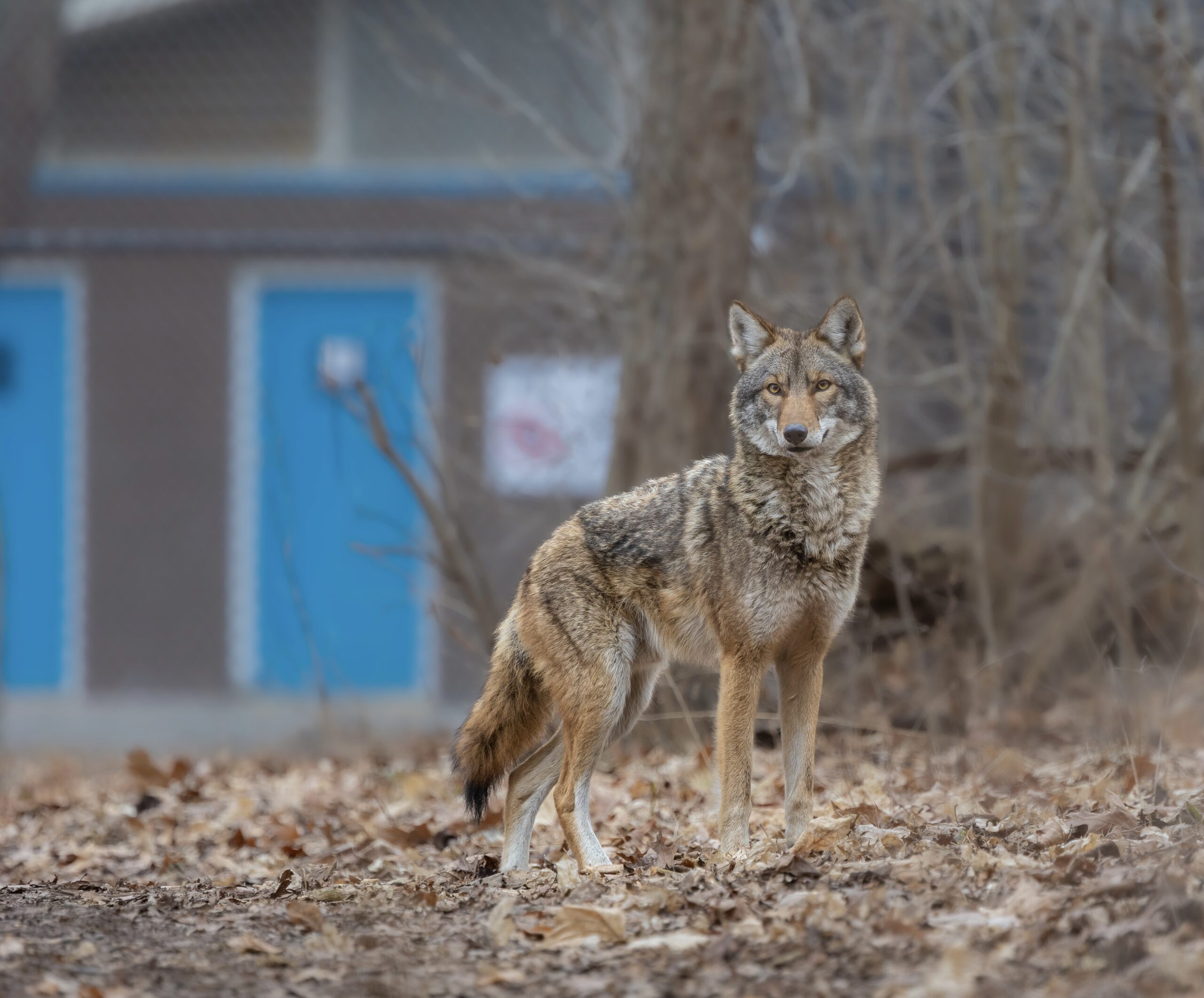
Photo by Ashley Toye
While it may take a few attempts, as coyotes might return hoping it was a one-off, consistent application of aversive conditioning will make them more likely to avoid that location in the future.
Important Note: NEVER run away from a coyote, as it may trigger a chase response – a trait also found in domestic dogs.
When to use aversive conditioning
Coyotes that display a proximity tolerance to humans should be reminded to keep their distance through aversive conditioning. This is particularly relevant in scenarios where coyotes are trotting down sidewalks when people are present, or directly occupying backyard spaces.
Important Note!
Not every situation calls for aversive conditioning. Coyotes should generally be left undisturbed if they are keeping to natural spaces such as ravine systems and fields.
It’s important to note that Aversive conditioning should NOT be employed if coyotes are cornered, appear sick or injured, or if they are in close proximity to a known den with offspring present. The key is to avoid creating unnecessary conflict where it does not already exist.
Coyote in a schoolyard or playground
TWC occasionally receives calls regarding coyote sightings in areas frequented by children. In most instances, the coyotes were spotted when children were not present. It’s important to clarify that coyotes do not view children as potential prey. However, there are various reasons why coyotes might be drawn to such areas.
Potential attractions for coyotes include litter in the area or the presence of their preferred prey—small rodents like mice or rats. Additionally, the location might be part of the coyotes’ territory, and they do not comprehend that it’s designated for children. Sometimes, coyotes choose open spaces in schoolyards to bask in the sun.
Given that coyotes naturally avoid humans, the commotion when school lets out or families arriving often encourages the coyote to move on. If their presence is unwelcome, teachers and parents can employ aversive conditioning to hasten the coyote’s departure. Regardless of a coyote’s presence, small children should always be closely supervised.
Implementing good stewardship practices in schoolyards can make them less attractive to coyotes. Securing garbage bins, teaching children to bring snack waste inside for disposal, and having children eat indoors before going outside can minimize food waste, reducing the likelihood of attracting coyotes or their preferred prey, mice, and rats.
To further educate children and educators about coyotes and appropriate responses when a coyote is nearby, TWC offers an
education program with school visits.
A coyote is “stalking” me!
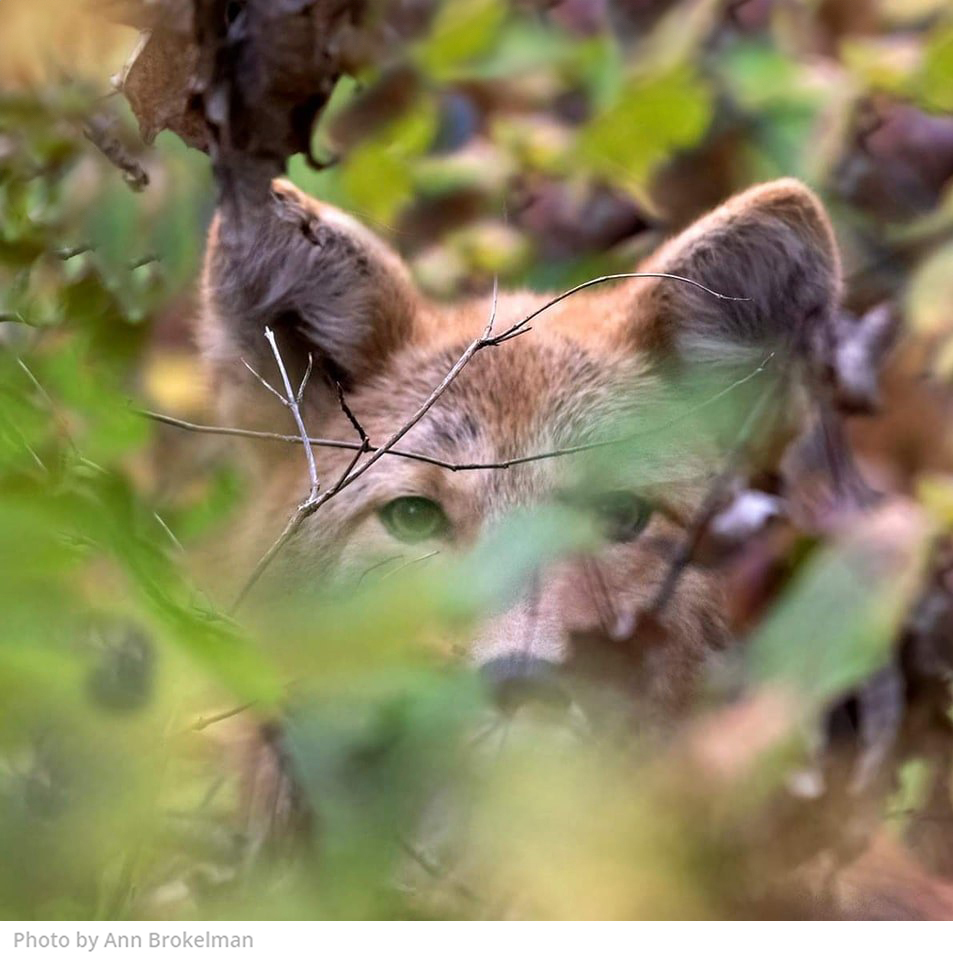
Similar to how we might keep an eye on a suspicious character walking across our front lawn, a coyote will monitor anyone moving through its territory. This behavior, often misunderstood as “stalking,” is more accurately described as “escorting.” Coyotes are naturally inquisitive and curious and may follow a perceived intruder to observe their activities, making sure that they leave peacefully without causing harm to the coyote’s family. Another scenario where a coyote may exhibit escorting behavior is when you’re walking your dog through their territory (further explained below).
A coyote has denned on my property
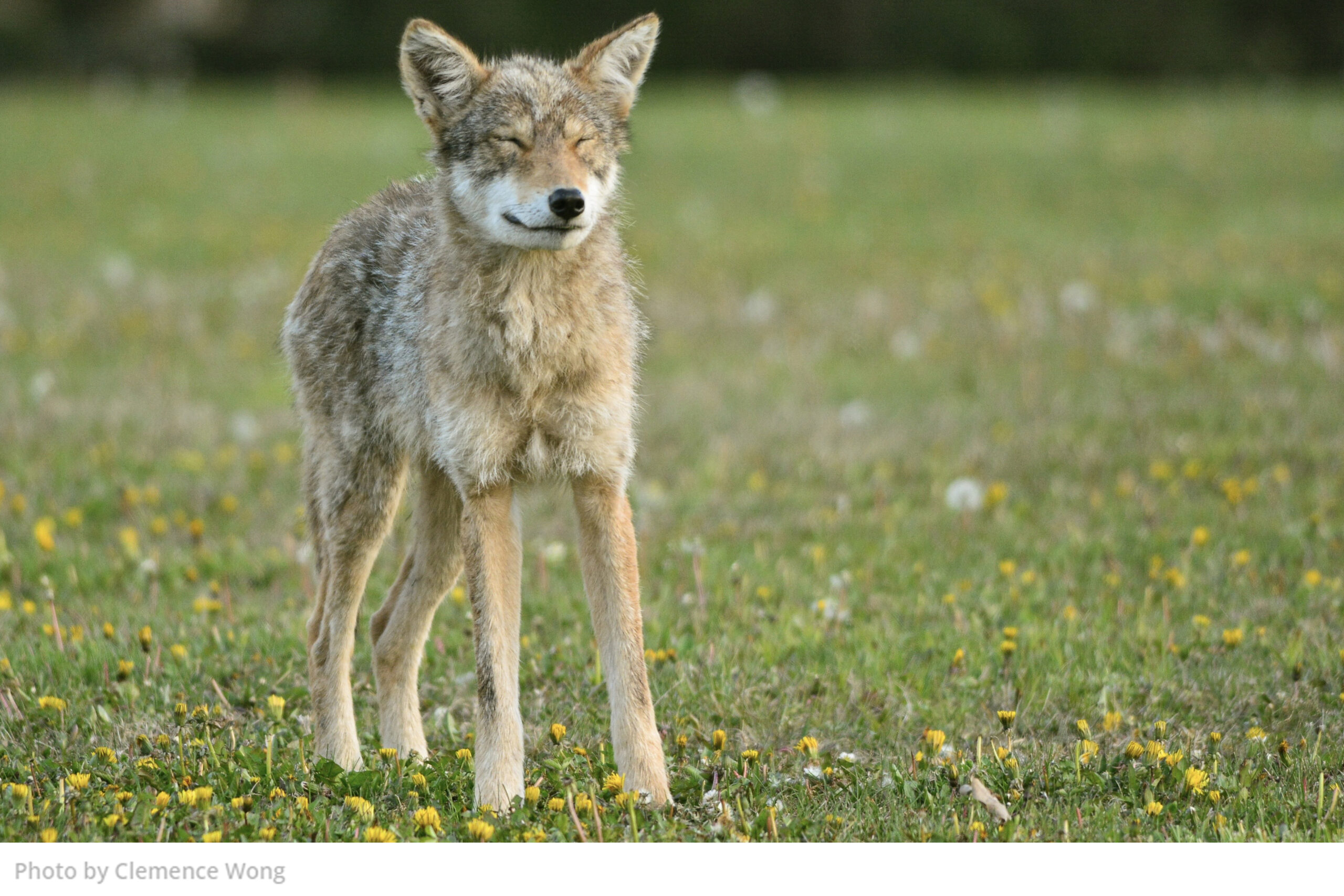
How fortunate to have the opportunity to observe such a rare glimpse into the private lives of coyotes! Despite their abundance in urban settings, coyotes are inherently shy and reclusive creatures that seek out dens in areas they perceive as safe from predators, particularly humans.
They meticulously scout potential den sites for days, assessing the risks and suitability of each location. When people seldom use their backyards, or when the area is overgrown or structures are in disrepair, a coyote may deem it a secure area to raise their pups due to the absence of predators or the superior shelter provided by overgrown vegetation or dilapidated sheds/decks.
Watching the young ones grow is both fascinating and enjoyable, but it’s essential to maintain a respectful distance or observe from inside the house to avoid alarming the babies or their parents. Pups typically begin venturing outside of the den around 3 weeks of age, while the parents work tirelessly to bring back prey and other food sources for the young ones to learn about and consume. By around 6 weeks of age, the den is typically abandoned, and the pups relocate to a rendezvous site. Shortly after, the pups start accompanying the parents on short foraging trips, further honing the survival skills necessary for life in the wild. By the beginning of fall, the pups are now old enough to fend for themselves, and begin to disperse to find their own territories. This period often leads to a surge in coyote sightings as juveniles venture out to establish their territories and seek potential mates for the upcoming breeding season. As juveniles embark on their explorations, it becomes more frequent to encounter larger groups of coyotes rather than solitary individuals or mating pairs.
In general, coyote families do not linger at their natal den site for extended periods and offer a delightful sight for observation. It’s crucial to refrain from feeding the family in any capacity as it could severely hinder the pups’ development and foster a dangerous dependence on humans.
Tolerance is always preferable when a wild animal chooses to den in a backyard without causing damage. Attempting to evict a wild family can lead to complications, potentially resulting in orphaning or exposing the family to risks if they have nowhere else to relocate. If tolerance is not feasible, even simple actions such as regular use of your backyard may prompt the family to relocate.
For further guidance, please refer to our section “Making Your Backyard Less Attractive to Coyotes,” which offers strategies to encourage the family to move on and prevent them from returning.
Can I trap, relocate, or kill nuisance coyotes?
No. Trapping, relocating, or killing coyotes is unethical, cruel and ineffective. Leg hold traps or snares are inhumane and can catch unintended victims like pets and other wild animals, and coyotes are notoriously difficult to catch via a net or box trap, especially if they’re healthy.
While relocation of wildlife is often seen as the “humane” alternative, relocating any wild animal, including coyotes, is most often a death sentence for that animal. Many people think that wild animals can live anywhere, and that relocating them to an area that seems more “natural” will be better for them. The reality is that most wildlife have specific home ranges where they are adapted to living, and coyotes are no different. Unfamiliar with their new terrain, relocated coyotes will go to great lengths to return home, often resulting in tragic outcomes such as being killed by cars or losing their lives in territorial disputes with resident coyotes already established in the new area.
Furthermore, the “band-aid” nature of relocation fails to address the root causes of human-wildlife conflicts. It does not mitigate the underlying issues that attract wildlife to human-populated areas, such as the availability of food, water, or shelter. A more sustainable and effective approach involves implementing comprehensive strategies that focus on coexistence, habitat modification, and public education to minimize these conflicts in the long term.
For over a century, humans have persecuted and killed coyotes as nuisance animals. Despite the monumental efforts to eradicate their populations, coyotes persist and are continually expanding their range throughout North America. They now occupy the ecological niche that larger predators like wolves, cougars, and bears once dominated.
True Fact!
Research suggests that aggressive control measures can backfire, leading to an escalation in the reproductive rate of coyotes. This includes breeding at an earlier age, larger litters, and a higher survival rate among their young. Whether we appreciate their presence or not, coyotes are here to stay.
Coyote and Dog Relations
The vast majority of urban coyote conflicts revolve around unsupervised pets. With dogs, the most common incidents happen because the dog is either off-leash or on an extendable leash.
Coyotes and domestic dogs share a common ancestor and belong to the Canidae family. These species share similar values, body expressions, and, in many instances, perceive each other as competition. Coyotes instinctively defend their territory against all canid species, including other coyotes and foxes, to safeguard their family and resources. Dogs, regardless of size, are not exempt from this protective instinct as coyotes view them in the same competitive light.
Communication between animals, including dogs and coyotes, heavily relies on nonverbal cues like body language and eye contact. Negative body signals displayed by a dog, such as direct staring, raised hackles, bared teeth, or a stiff posture, can be interpreted by coyotes as threatening, especially when expressed over great distances.
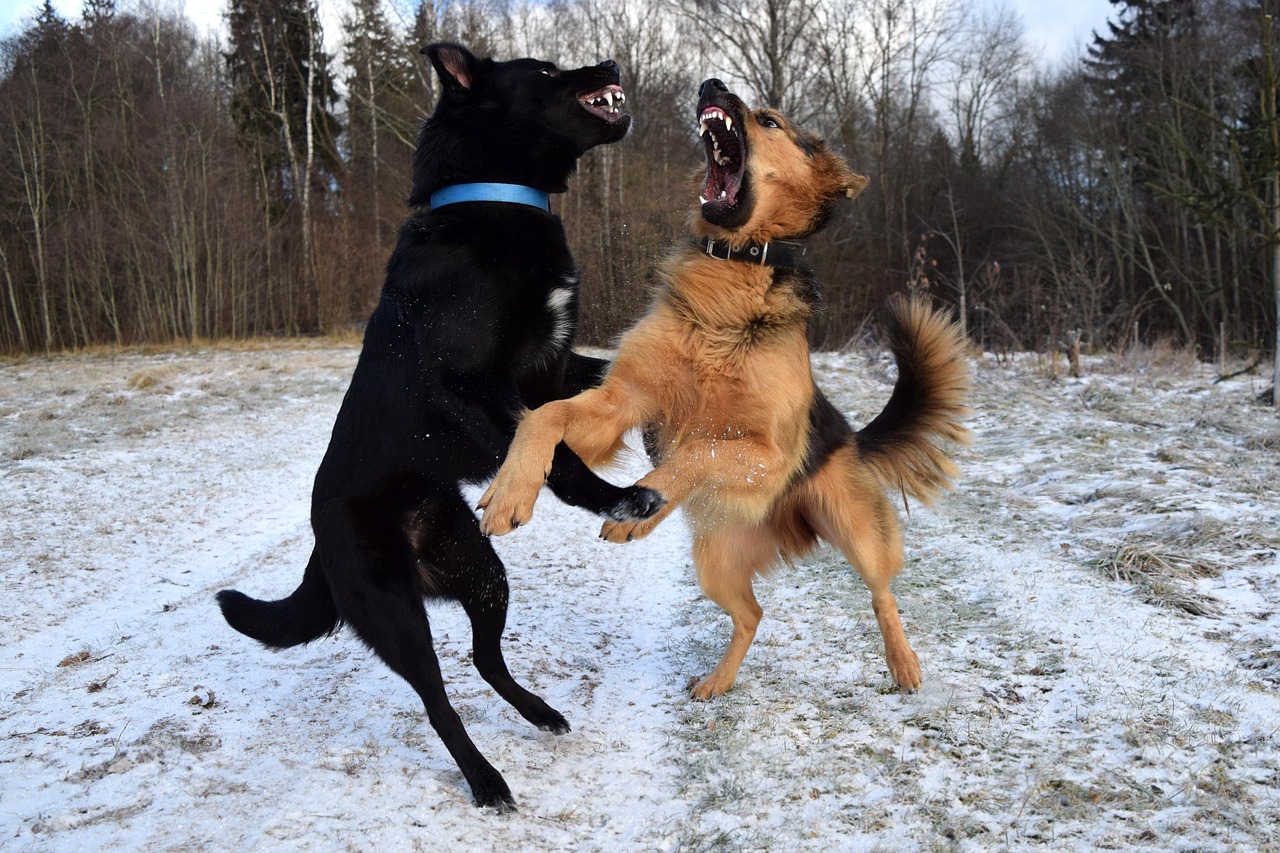
To prevent potential altercations, it is advisable to maintain a safe distance, keep your dog on a non-retractable leash no longer than 3 feet or 1 meter, and promptly move on. Don’t permit dogs to bark at or chase any wildlife, including coyotes. These proactive measures contribute to a peaceful relationship between domestic dogs and coyotes in shared environments.
Conflict between Dogs and Coyotes
If an off-leash dog displaying negative body language approaches a coyote, the coyote will respond by arching their back, resembling a Halloween cat, fluffing up their fur, and tucking their tail. These signals are unmistakable even for the most oblivious dogs, conveying a clear message: BACK OFF.
Many unleashed dogs have a tendency to chase coyotes, often ignoring recall commands. While coyotes typically seek to avoid confrontations, they may defend themselves if a dog acts aggressively or pursues them. In such cases, coyotes might retaliate with nips to emphasize that they are not welcome in their territory. Wild animals, including coyotes, naturally avoid fights to the death, as they cannot afford to risk serious injury or death with a family to protect. Unfortunately, smaller dogs are more vulnerable in territory-related conflicts and might even be perceived as prey, especially if they weigh less than 10 lbs.
MYTH ALERT!
Coyotes do not “lure” dogs into the forest to ambush them. This is a false but often perpetuated interpretation of their behavior. Dogs, regardless of size, are known to harass and chase wildlife. Coyotes, motivated by the instinct to protect their family and secure their territory, are not driven by malicious intent. Understanding these dynamics can contribute to safer interactions between dogs and coyotes in shared environments.
Like dogs, coyotes can experience “trigger stacking”, albeit in their own unique contexts. For example, if a coyote encounters various stressors within its environment, such as being consistently accosted by off leash dogs, these stressors can accumulate and contribute to heightened levels of anxiety or stress. Consequently, the coyote’s survival instincts are activated, prompting them to exhibit more defensive or reactive behavior. This heightened state of alertness can potentially result in conflicts with dogs they encounter later on, even if the dogs themselves did not directly provoke the coyote.
Preventing conflict between dogs and coyotes
The key to avoiding coyote conflicts while walking your dog is prevention. Maintain a safe distance, ensure your dog is on a non-retractable leash no longer than 3 feet or 1 meter, and move on if you encounter a coyote.
In the rare event that a coyote approaches you and your dog, pull in your dog on a short leash or pick up your small dog. NEVER run away. Apply aggressive aversive conditioning tactics to the coyote – channel your inner caveperson! Be big and loud; throw rocks or snowballs towards (but not directly at) the coyote to create a memorable experience. Utilizing the coyote’s natural fear of humans gives people an advantage in conflict situations.
Coyotes and dogs in yards
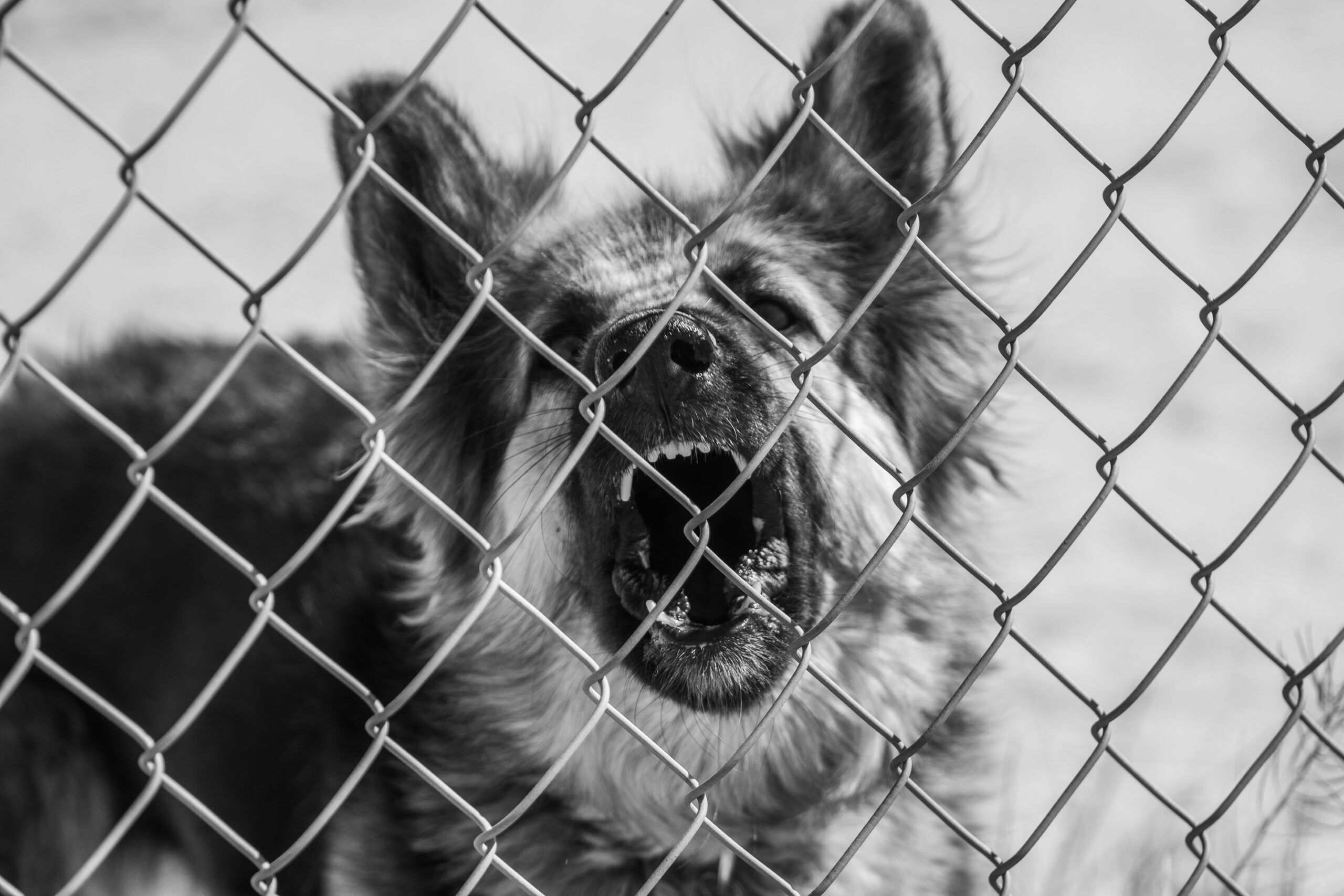
In yards, dogs should not be left outside unsupervised for extended periods. When left unattended, dogs may get into various kinds of trouble, and interacting with wildlife is a risk for unsupervised pets. For instance, small dogs, particularly toy breeds and puppies, can become targets for hawks or owls in open areas if left unattended. Before letting your dog(s) out at night, take a moment to step outside and make some noise by clapping your hands or using a noise maker to spook off any wildlife that might be present in your yard. Always supervise small dogs when they’re outside.
It’s important to note that barrier aggression is a trait observed in domestic dogs, causing frustration and leading to negative behaviors such as hyperactivity, barking, and raised hackles. If a coyote witnesses such strong messaging through a fence, it can provoke conflict. Installing wooden fencing can prevent this type of interaction and is better for your dog’s mental well-being as well.
Coyotes and Cats
Coyotes are not known to seek out pets as a food source, but they are opportunistic predators and small, free-roaming pets, including cats, may become targets due to their similar appearance to coyote’s preferred small prey.
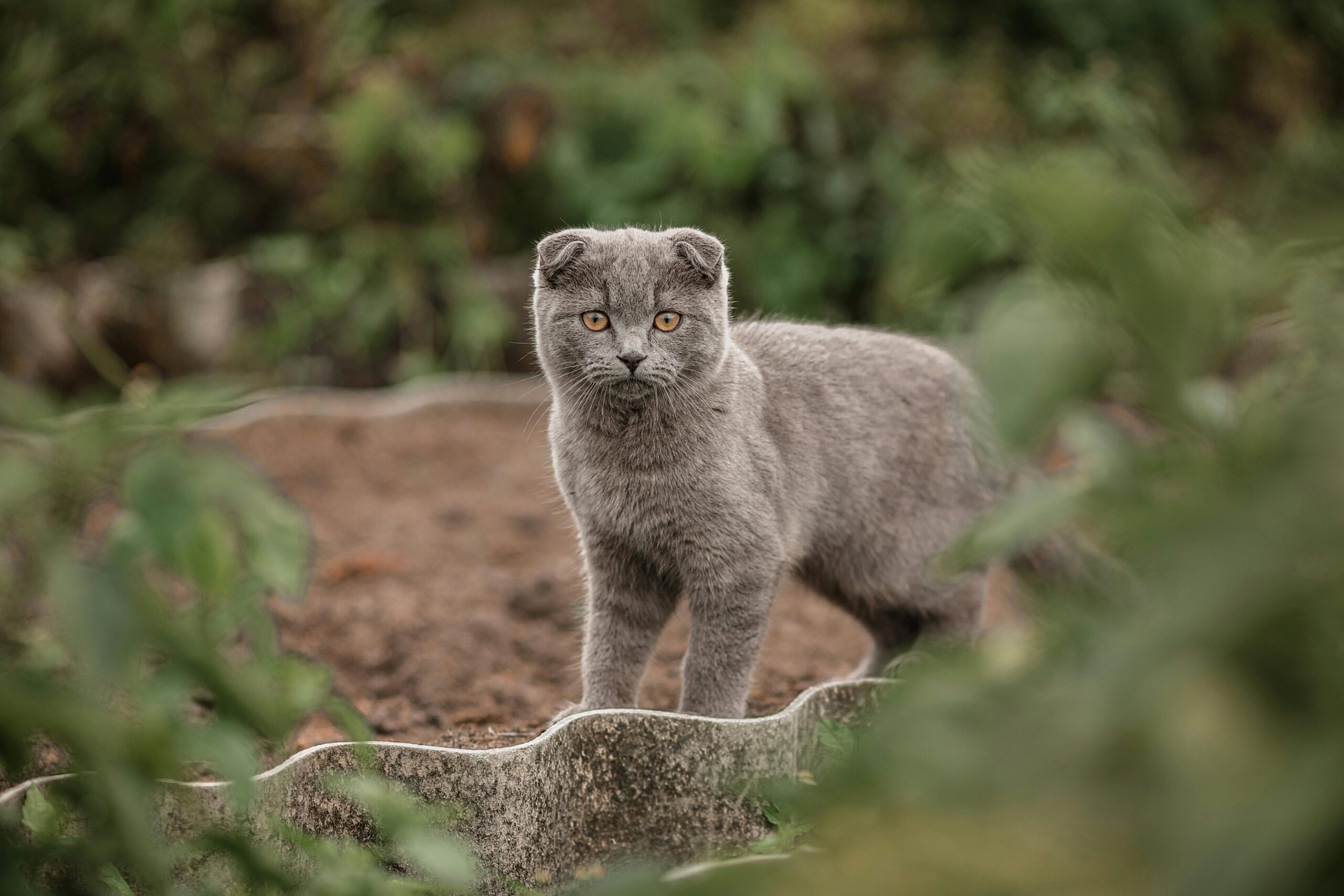
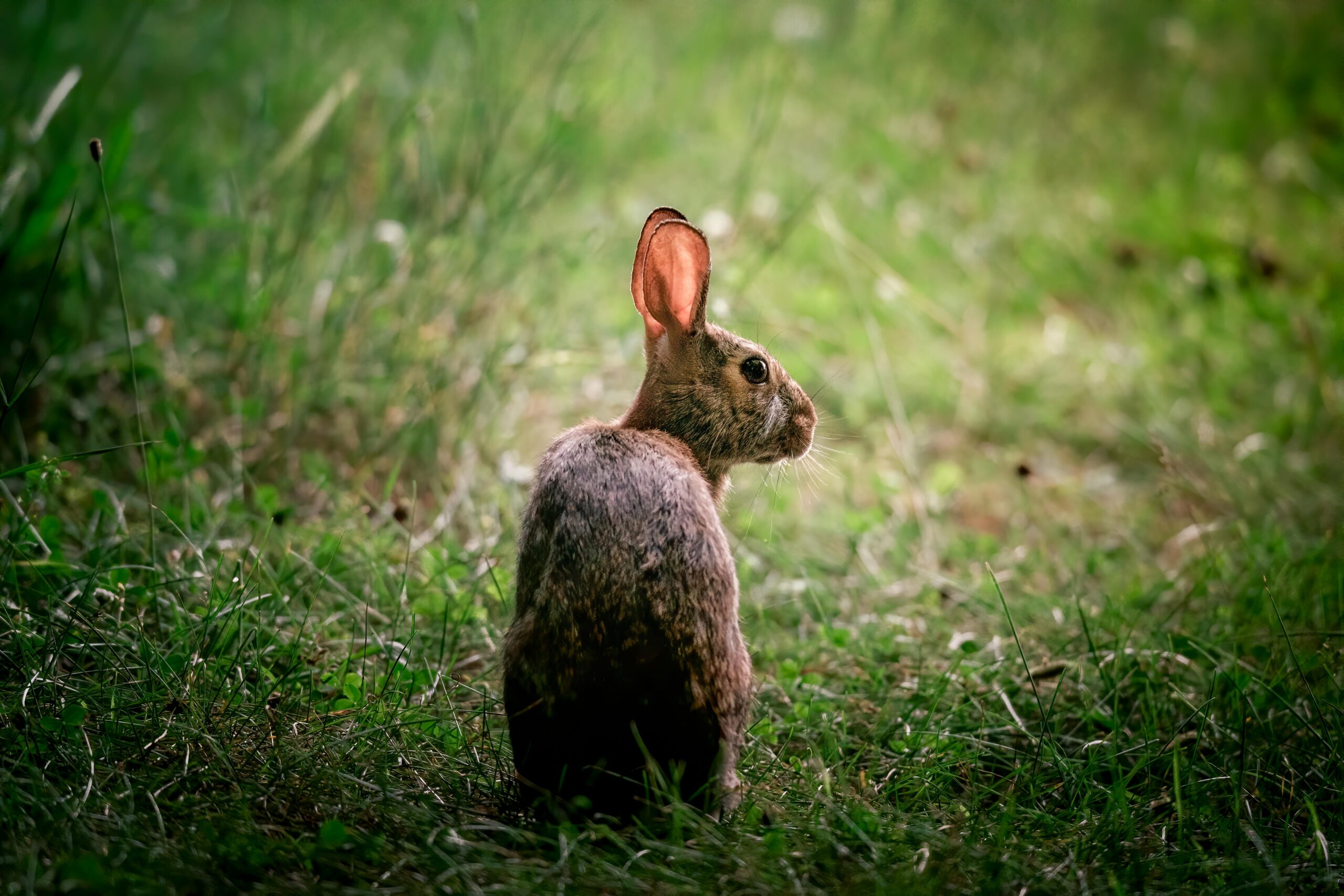
There are many risks to outdoor cats beyond coyote predation, including car collisions, dog attacks, diseases, parasites, poison, getting lost, cruel humans, and predation from other types of wildlife such as hawks. It should not be assumed that a coyote preyed upon a cat if they went missing. Adopting proactive measures can benefit both coyotes and domestic cats. Please read our Cats and Wildlife Page to learn more about how to keep your cats safe!
Is a coyote actually a “coywolf”?
The genetic composition of Eastern coyotes involves a complex interplay between coyotes and wolves, primarily Grey and Eastern wolves. These species experienced historical population bottlenecks, contributing to their eventual hybridization. About 100 years ago, when European settlers expanded eastward in North America, they employed aggressive predator control measures and engaged in the destruction of habitats which led to a significant reduction in both coyote and wolf populations. This bottleneck effect forced the remaining individuals to interbreed, leading to the merging of genetic material resulting in a hybridization process that gave rise to the Eastern coyote.
The resulting Eastern coyote, sometimes inaccurately called “coywolf,” exhibits a unique genetic makeup, reflecting contributions from Western coyotes, Eastern wolves, grey wolves and, to a lesser extent, domestic dogs. Coyotes in the Northeast are mostly (60%-84%) coyote, with lesser amounts of wolf (8%-25%) and dog (8%-11%).
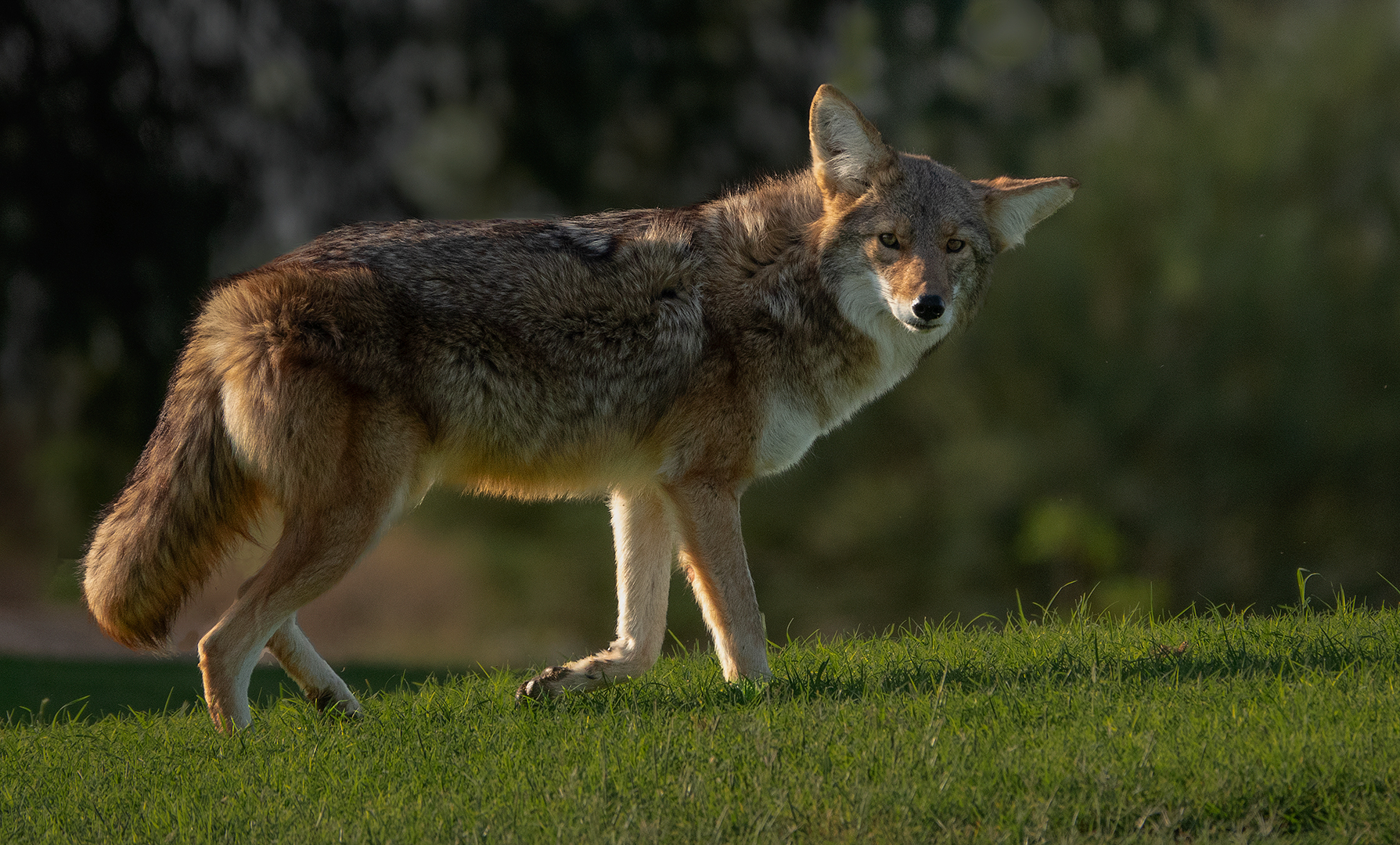
Photo by Vanessa Van Rhijn
Did you know?
Tests show that there are no animals that are “just” a coyote, but some Eastern coyotes have almost no wolf at all. All Eastern coyotes show some evidence of past hybridization, but it is not thought that they are actively mating with dogs or wolves in the present day.
This intricate genetic history has shaped their physical characteristics and ecological roles in ways that distinguish them from their Western counterparts. Understanding their history provides valuable insights into the evolutionary dynamics of these canids, emphasizing the need for accurate terminology and recognition of their distinct genetic identity. Referring to them solely as “coywolves” oversimplifies their genetic makeup and may perpetuate misconceptions about their origins and ecological roles in urban and suburban environments.
It is essential to emphasize that the presence of wolf DNA in Eastern coyotes does not inherently make them more dangerous to humans. The misperception that these hybrids are more aggressive or pose a greater risk to humans is not supported by scientific evidence. Eastern coyotes, like their Western counterparts, are generally shy and elusive, preferring to avoid human interactions.
What to do if you see a sick or injured coyote
Unhealthy coyotes may exhibit behaviour perceived as bold or passive by commonly showing up during the daytime despite human activity, due to a range of factors linked to their compromised health. When coyotes are unwell, they may experience increased stress and discomfort, disrupting their usual habits. The pain or discomfort associated with illness or injury could drive them to seek food or resources more urgently, leading them to venture out throughout the day. Additionally, weakened individuals might struggle to maintain their usual caution and aversion to human presence, making them more visible during daytime foraging or movement.
One of the most prevalent ailments afflicting urban coyotes is a condition known as “sarcoptic mange.” Mange is a parasitic mite that burrows into the host’s skin causing relentless itching, resulting in noticeable fur loss and self-inflicted wounds. These animals are particularly vulnerable in winter, as they struggle to find relief from the harsh cold, posing a severe threat to their lives unless they get help.
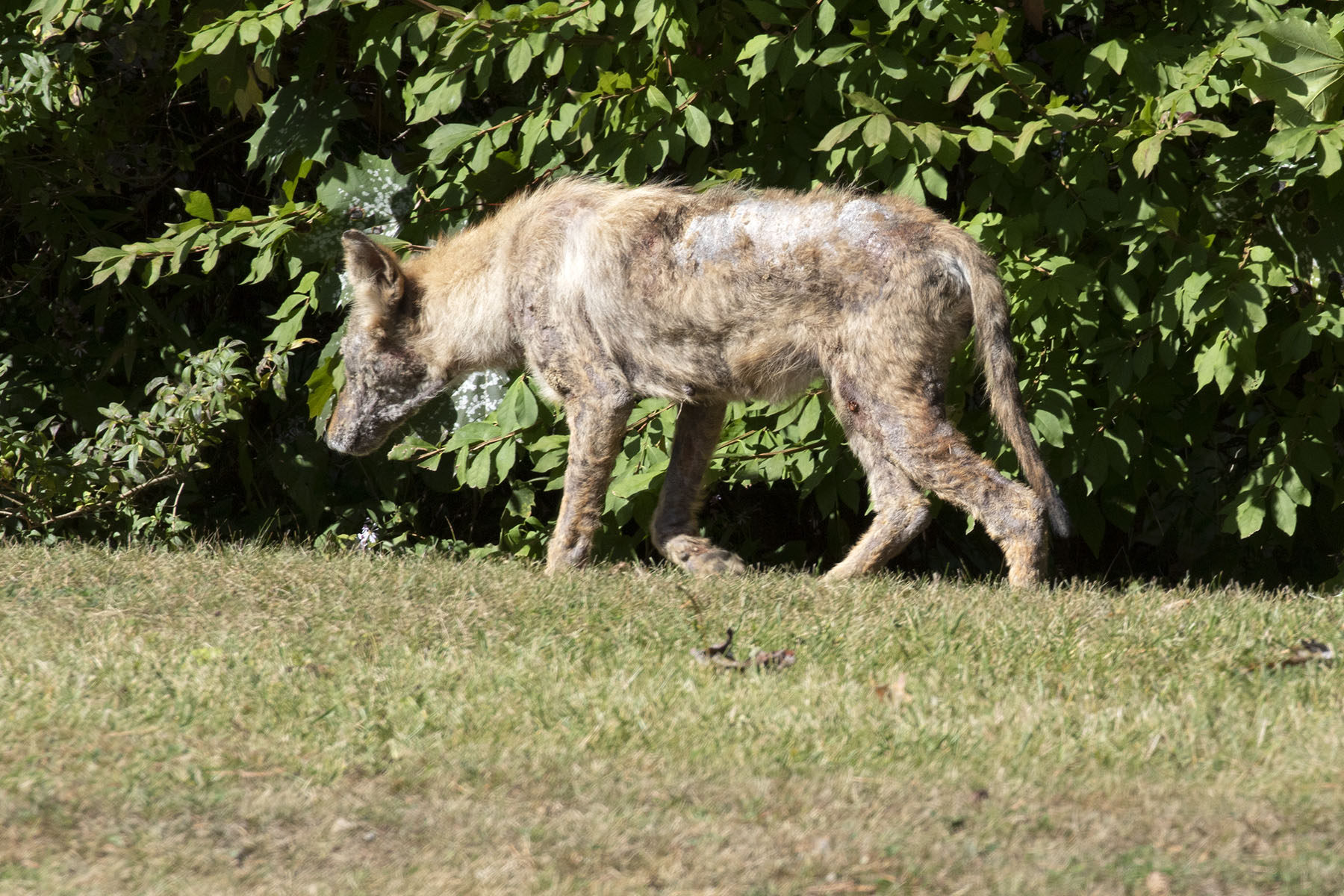
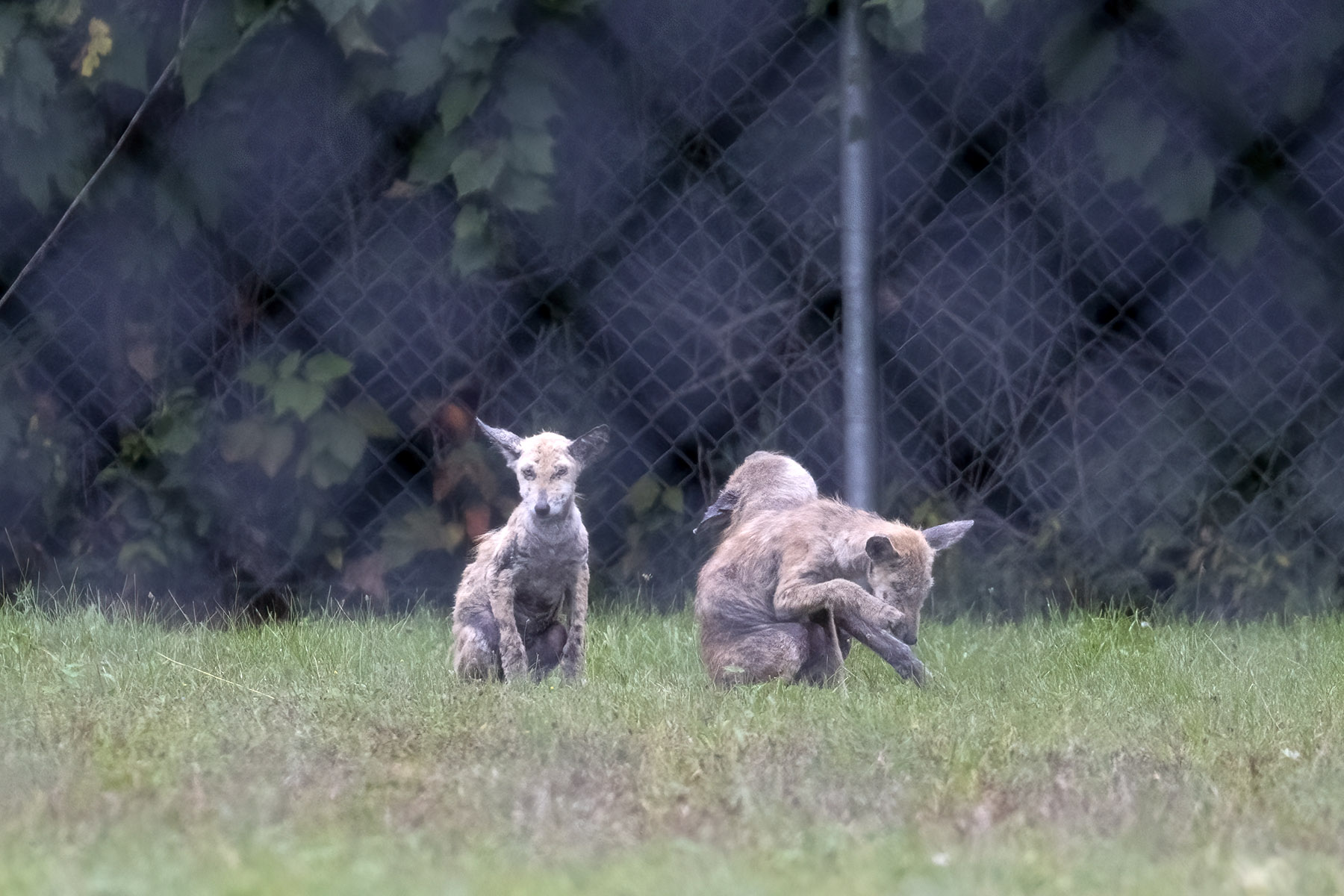
TWC tracks sightings of sick or injured coyotes in the GTA with the goal of rescuing and rehabilitating them. If you encounter a sick or injured coyote, please contact your nearest wildlife rehabilitator to inform them. If you are situated in the GTA, please complete TWC’s online request for assistance form, and provide details about when and where you spotted the coyote, and attach any available photos.

